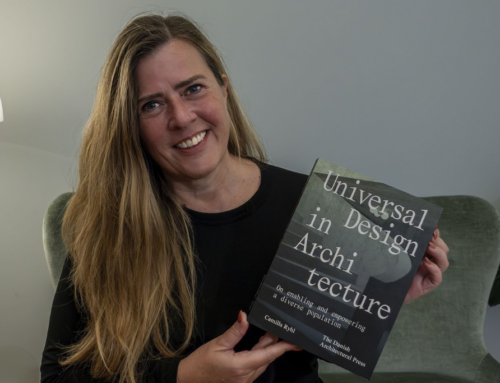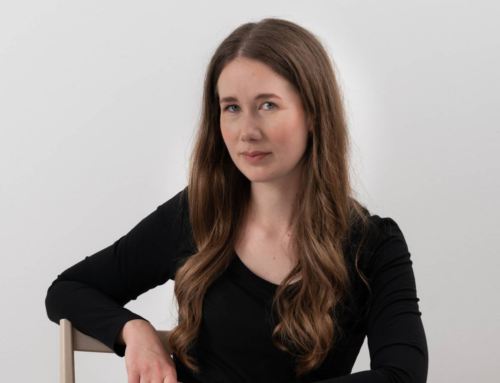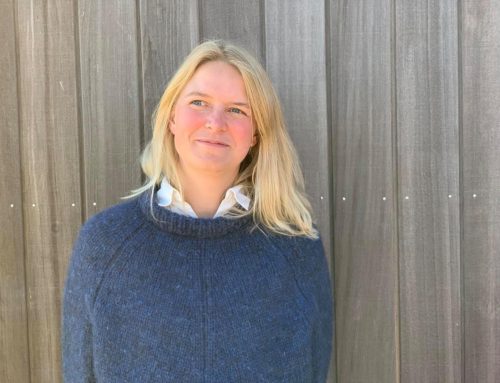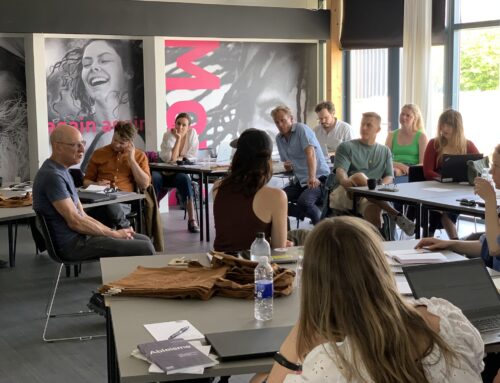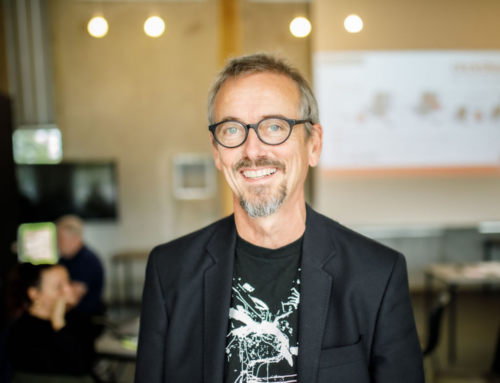
The sociologist and inspiration from universal design
Leif Olsen is inspired by universal design in his research and work on creating a more inclusive society. He believes that we can use the concept to design social interventions, studies and forms of social interaction that allow everyone to be included. When he designs studies and evaluates social interactions, he asks himself the critical question: Is everyone able to participate? The answer is rarely an unequivocal yes. Often, however, it’s possible to move boundaries to allow more people to participate.
by Thomas Bjerg. The article is published on 10/04/2022.
At times, the 57-year-old sociologist Leif Olsen feels overwhelmed by the vision and challenges posed by universal design. However, he is thrilled that his participation in UD Hub’s research network allows him to exchange knowledge and collaborate with others on the beautiful ideal of the American architect and wheelchair user Ron Mace’s concept on designing buildings, products and social interventions that everyone can use on equal terms, as universal design holds so much value and potential for everyone which we need to bring to fruition. That’s why he accepted the invitation to join the network.
“Universal design is a wonderful concept; inspiring and potentially very useful, but also demanding. We may not be able to completely live up to the vision, but the concept is constructive and able to push the development of buildings, products, social interventions and knowledge in a more inclusive direction. In that way, it holds value for all of us, which is important for us to remember,” said Olsen, a senior researcher at VIVE – the Danish Center for Social Science Research.
Olsen has been a researcher in the field of social services for over 25 years. He is glad to get the opportunity to see whether he can develop more inclusive designs for social interventions and studies in collaboration with other researchers, professions and ordinary citizens. This could entail designing methods in research that prevent dropouts and obstacles that make people with disabilities unable to participate due to social circumstances, for instance.
Challenging researchers to develop inclusive studies
Olsen regards the concept and values of universal design as a way to challenge mindsets. It makes him up his game when designing studies that use different interviewing methods, the goal being to eliminate any obstacles that exclude people with disabilities. And that’s where universal design can be helpful; by inspiring researchers to use language and methods that allow more people to participate in their studies.
Olsen is delighted whenever he or his colleagues succeed in getting one step closer to the ideal of inclusive studies. This typically happens when the researchers are committed and receive support and resources to take the additional steps to accommodate people’s diverse requirements for participation. Ultimately, it is about everyone being able to contribute their experience and knowledge.
“We need to become more conscious of the obstacles that exclude people from studies. This can include everything from the physical settings to the way in which we use language and create relationships with each other. That’s why it’s important that researchers are aware of and examine obstacles to participation in areas such as education, work, cultural life and research projects. Such awareness is important if we want to translate the values of universal design into practice and create an inclusive society.”
Before we can eliminate obstacles, we need to be aware of them
Olsen points to the important connection that exists between universal design and the core of the social concept of disability. In the social understanding, disabilities arise when people with functional impairments encounter obstacles that prevent them from being able to participate in societal activities on equal terms with everyone else. In other words, disability becomes a term for people who not only live with functional impairments, but also encounter obstacles to participation. Universal design is intended to address that problem. The concept requires us to design all kinds of constructs – such as buildings, infrastructure, social media, social interventions – to be usable by everyone.
“It’s a matter close to my heart that barriers to participation is the key issue in the social concept of disability. It means that we should all consider how we can eliminate existing obstacles and avoid creating new ones, allowing people in all their diversity to participate in activities.”
Olsen welcomes the many actors who are already underway with incorporating universal design into their projects.
“Their ideas, experiences and knowledge deserve our attention. I’ve been fortunate enough to be able to follow and evaluate a lot of inspiring initiatives where actors are developing more inclusive workplaces and recreational and cultural activities”.
Inclusive associations and cultural activities
Some years ago, Olsen was involved in the evaluation of two partnerships that revolved around developing new forms of inclusive collaborations and services in voluntary associations and cultural institutions. This was before he really knew about the concept of universal design, so it was only afterwards that he realised that the actors in both projects were involved in incorporating universal design into the activities of associations and cultural institutions.
The Grow Your Life partnership in the municipality Fredericia set out to develop new and inclusive adult learning school courses as well as social and cultural activities that removed the obstacles that prevented people with disabilities from participating. This allowed more people to get actively involved and contribute to cooking, theatre and music in the city.
In the Copenhagen-based Voluntary Cultural Communication partnership, the participants developed activities and educational material at the National Gallery of Denmark. The project eliminated barriers and made it possible for more people with disabilities to use the museum actively. The new users got to tour the museum’s exhibitions, and the staff and young volunteer cultural guides were inspired and gained knowledge on how to make the museum more diverse.
Knowledge portal aims to close the gap to the labour market
Many people with disabilities struggle to find a job, which is another issue that universal design can be applied to, namely by inspiring workplaces to develop jobs without barriers. In the spring of 2021, Olsen and VIVE – the Danish Center for Social Science Research – began collaborating on the development of a knowledge platform aimed at people with disabilities, companies, job centres and other stakeholders seeking knowledge and inspiration on how to create more jobs that are free from barriers.
VIVE is working with the consultancy firm Implement to develop the platform for Denmark’s National Board of Social Services. Among other things, the platform is envisaged to contain knowledge about five types of disabilities, legislation and technical solutions that can eliminate barriers and create more job opportunities.
“We need to remove these obstacles that keep private and public enterprises from hiring people with disabilities. I think there’s a lot of promise in investigating the extent to which universal design can help with that. We can draw inspiration from the other Nordic countries’ work with universal design,” said Olsen, noting that universal design is part of the action plan for the Disability Council under the Nordic Council of Ministers, in which he is one of Denmark’s representatives.
Links to further reading about Leif’s research and references in the article:
Evaluation: At skabe deltagelse for borgere med handicap gennem frivillig faglighed
The Disability Council under the Nordic Council of Ministers: Funktionshinderrådet
Leif Olsen
Senior Researcher at VIVE – The Danish Center for Social Science Research
Member of the Bevica Foundation’s research network
Read more research profiles
